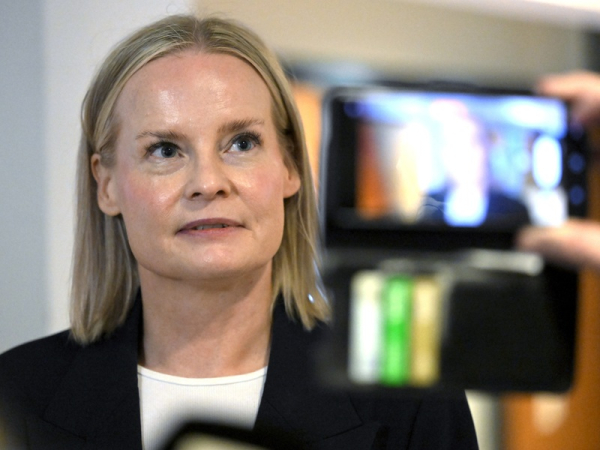
Minister of Finance Riikka Purra (PS) spoke to reporters in Helsinki on 28 January 2025. The National Audit Office of Finland (VTV) has asked that the government stop exaggerating the effects of its cost cuts and tax increases on the public economy. According to VTV, the gap between the government estimate and reality is anywhere between 1.9 and 4.4 billion euros. (Emmi Korhonen – Lehtikuva)
- Next Article Finland’s local politics could swing left, indicates poll by YLE
THE GOVERNMENT of Prime Minister Petteri Orpo (NCP) has not created as significant cost savings as it claims, according to the National Audit Office of Finland (VTV).
VTV estimates in its fiscal policy monitoring report for last year that the spending cuts and tax increases agreed on by the right-wing government will consolidate the public economy to the tune of 4.4 billion euros in 2027 – less than half of the nine billion euros calculated by the government.
The disconnect stems partly from the fact that the report accounts for neither the nearly one billion euros in savings to be generated by the 21 well-being services counties nor the two billion euros to be generated by employment policy decisions – both targets that have been described as overly optimistic.
Even if the savings were realised, the government would fall 1.9 billion euros short of its 9-billion-euro target because its calculations do not take into account the negative economic impact of public investments and cuts in unemployment security contributions.
“We believe the government should take into consideration the kind of decisions that erode the big picture,” Matti Okko, the director of the oversight and monitoring unit at VTV, stated to Helsingin Sanomat on Saturday.
The government has argued that its one-off investments do not erode public finances because they will be funded with asset sales, an argument that is rejected by VTV.
“Investments are costs just like any other things in the framework of managing the public economy. Even if they were funded by selling assets, that fact doesn’t change. The sales do of course reduce the need to borrow,” remarked Okko.
The cut in unemployment security contributions, in turn, popped unexpectedly into the government agenda due to an improvement in the assets of the Employment Fund. The current rules prescribe that the contributions must be increased if the assets decrease and decreased if the assets increase.
“Still, lowering unemployment security contributions has a material impact on the amount of public revenue raised,” he said.
VTV also highlighted that the government has taken into consideration the projected employment impacts of its spending cuts and their impact on the public economy, but not the negative impacts of the cuts and tax hikes on economic growth.
The office is not demanding that the government draft additional cost-cutting measures because tighter fiscal policy could jeopardise the fragile economic growth in Finland. It does stress, though, that the government should refrain from exaggerating the effects of its policy measures and that work to tackle the imbalance between public expenses and revenue must continue in future electoral terms.
Aleksi Teivainen – HT
- Next Article Finland’s local politics could swing left, indicates poll by YLE
Source: www.helsinkitimes.fi
